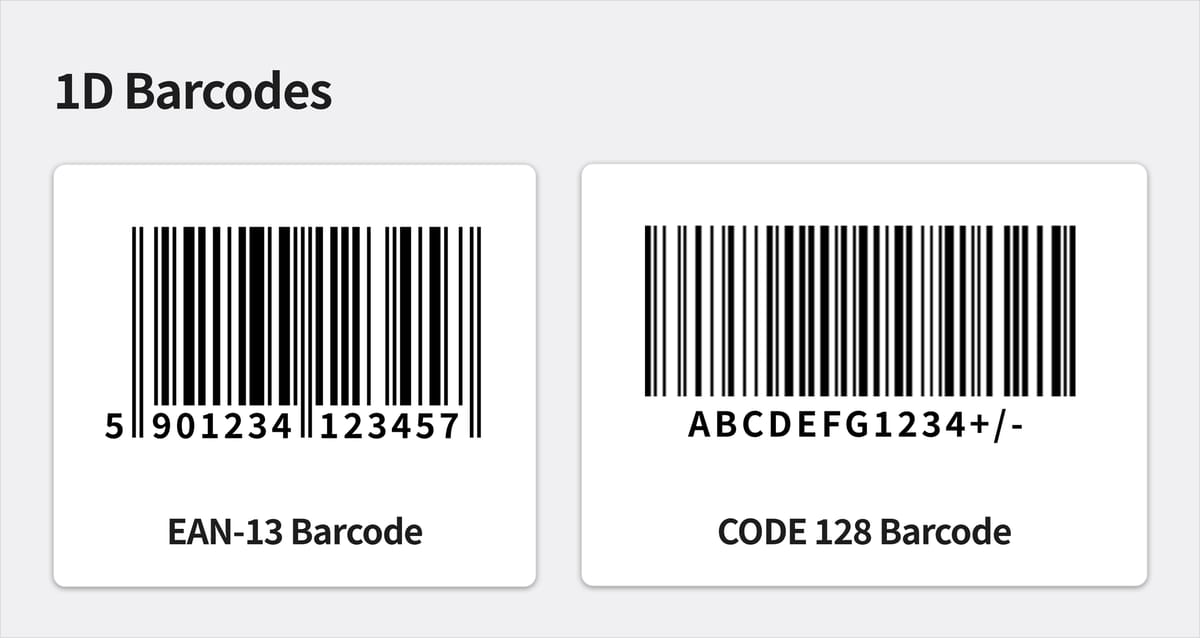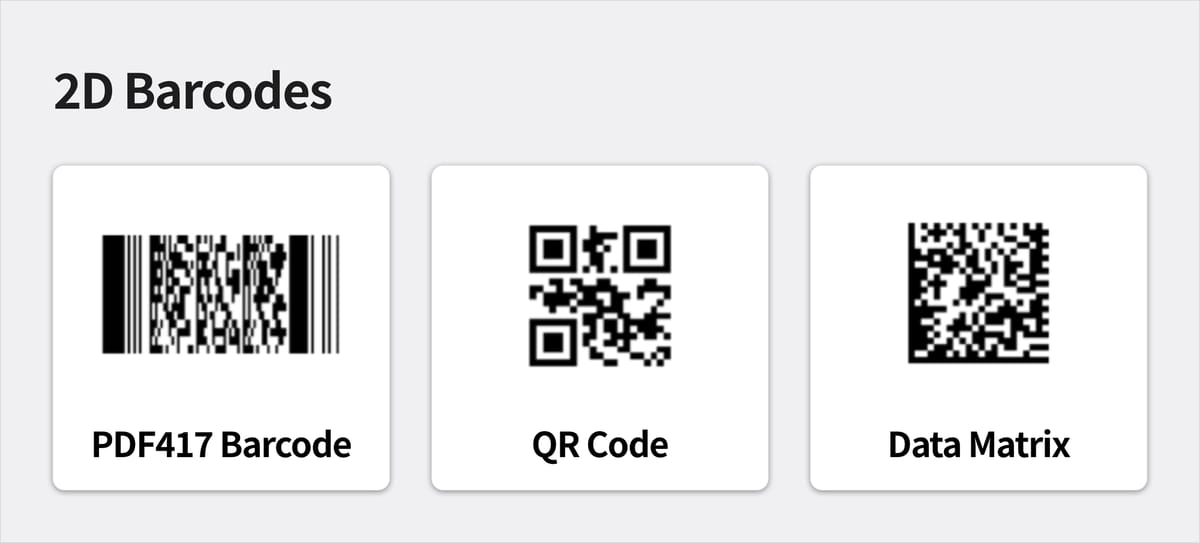Barcodes vs. QR codes. What's the Difference?

What do you need to manage inventory? For starters, you need items, warehouses, and people. Something else that is essential that may be overlooked is barcodes. Barcodes are essential for fast inventory tracking, efficient sorting, and organizing of items. While it is possible to manage inventory without barcodes, no one does it. We’ll show you how barcodes are a crucial tool for improving efficiency in product and inventory management.
What is a barcode?
In simple terms, a barcode is a symbol that represents information, much like using the ▲ symbol to represent the button for an elevator going up. Barcodes are made up of a combination of black bars and white spaces, which form a picture that represents information such as "a sweater made by company A in the US".

Before the advent of barcodes, people had to manually verify, enter, sell, and record product information. Although barcodes are now ubiquitous, without them, the ease of information input and output we take for granted today would have been impossible. Barcodes have reduced errors in product and inventory management while also saving on labor and administrative costs. Moreover, barcodes have enabled swift and precise inventory checks, leading to more efficient and cost-effective inventory management for businesses.
1D barcode? 2D barcode?
When you think of "barcode", do you picture the typical barcode with black bars arranged in a line? Some may remember the “QR code” that is required to be granted entry into a store, an establishment at the height of the pandemic. Both are classified as barcodes, with the former referred to as a “1D barcode” and the latter as a “2D barcode.”
A simple way to distinguish the two different types is that a 1D barcode is a barcode system that encodes information in one(1) direction. If there are black bars lined up, they are all 1D barcodes. On the other hand, a barcode system that encodes horizontally, vertically, and bi-directionally, like the QR code, is a 2D barcode.
As directions of information encoding increase, 2D barcodes can contain more information compared to 1D barcodes. Therefore, when encoding the same amount of information, a 2D barcode can be made much smaller than a 1D barcode. Within the 2D barcodes, they can contain images and links in addition to numbers and characters. Essentially, you can think of 2D barcodes as performing the same function as individual files one would have on their computer or mobile device.
However, there are some drawbacks to 2D barcodes. If you look closely at a 1D barcode, you can see numbers or characters written at the bottom of the barcode. This is a way of displaying the encoded information in readable characters so that when situations arise where the barcode cannot be scanned, people can manually read the information by looking at the numbers and characters. This is the unique feature that 1D barcodes have over 2D barcodes since 1D barcodes record relatively simple information. However, it would be impossible to display multifaceted information such as images and links with just a few digits or characters in a 2D barcode.
Types of Barcodes that Add Information to Products

Now that we’ve covered some fundamentals about the two different barcode types, let us explore some of the commonly used barcodes across various industries. The Universal Product Code (UPC), also referred to as UPC-A, was the original product barcode format in the 1970s. With increasing demand in other regions, country codes were added to the front of the barcode number, expanding it to 13 digits and becoming EAN. The USA and Canada use a country code of zero, which is not printed under the barcode. Some retailers, particularly smaller ones, may still use older inventory systems that only accept 12-digit UPC numbers instead of a 13-digit string. To convert to EAN, simply add the country code of 0 to the beginning of the 12-digit UPC.
The EAN (European Article Number) barcode, also known as the International Article Number, is a standard barcode used worldwide except for the U.S. and Canada. The barcode can only record numbers from 0 to 9. The EAN-13 barcode, which records country, company, and product codes in 13 digits, is the most commonly used EAN barcode.
CODE39 is a barcode that can record not only numbers but also alphabets and symbols, allowing specific information such as serial numbers to be included in the barcode. Additionally, its flexible length limit allows for variable barcode length. CODE128 is an ASCII barcode that can express 52 uppercase and lowercase letters of the English alphabet, 32 special characters, and other keyboard characters. CODE128 is especially useful since all characters on a computer keyboard can be used.

What we just mentioned above (UPC, EAN, CODE39, and CODE128) can be categorized as 1D barcodes. Let’s take a look at some examples of 2D barcodes. One of the 2D barcodes is named PDF417, consisting of four black bars and four white spaces with a length of 17 modules. PDF417 is a stack-type barcode where bars and spaces are stacked vertically as one would stack goods in a warehouse. This type of 2D barcode is commonly used for items like passports that require a higher level of security.
QR code, which was briefly introduced in the beginning, cannot be excluded from our discussion of 2D barcodes. With the proliferation of smartphones, QR codes have become a popular type of barcode due to their ability to be customizable for personal and business use. Unlike PDF417, QR codes are called matrix barcodes because square-shaped cells are arranged in a grid pattern.
Data Matrix is similar to QR codes in appearance but has slightly different features. It can store less information than QR codes but has the advantage of being highly recognizable even when reduced in size. It is commonly used on small packaging surfaces for cosmetics, medical, and pharmaceutical products.
Data Center > Product > Import Excel and selecting the "Generate” checkbox to quickly generate barcodes for dozens of products in seconds.Barcodes are tools used not only in inventory management but also in various industries such as manufacturing, logistics, and distribution for information management. With the inventory management solution BoxHero, you can register existing barcodes or create new ones to manage your products. BoxHero provides the functions to create and print both 1D and 2D barcodes. Try the BoxHero solution for free and start inventory management using barcodes!


